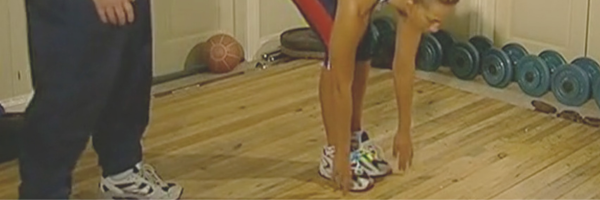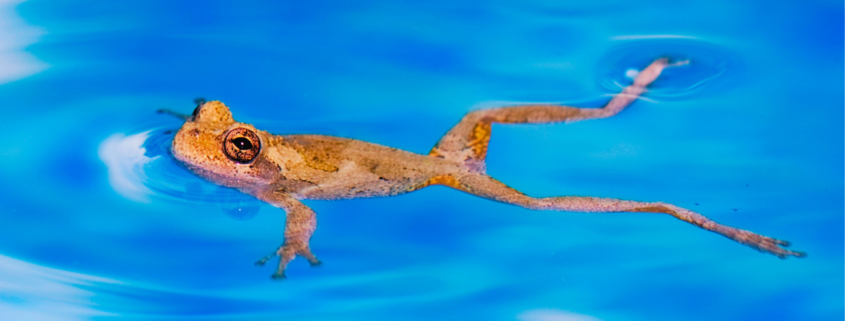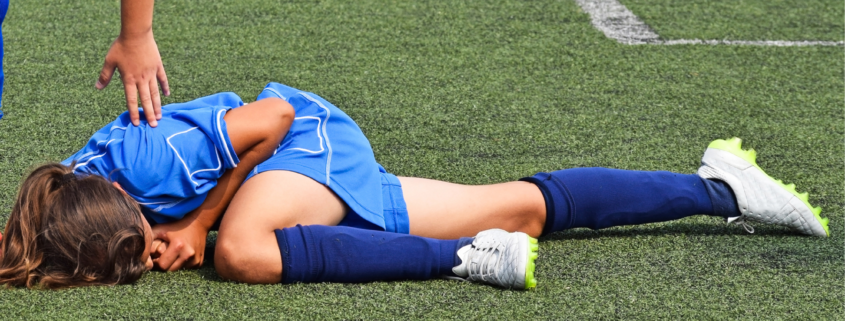There is an old fable that a frog in water where the temperature is being slowly raised will not jump out of the water, as the changes to their detriment are slow. Compared to a frog suddenly placed in boiling that may realize this is not a healthy place to be.
It appears to me that as the injury incidence rises in sport from decade to decade athletes are like this fable. They assume it is normal and accept the environment.
In an earlier article (A Lament for the Late Arrivals) I spoke about four waves of acceptance of strength training in sport (Table 1 below). In this article, I seek to give specific examples of the lessons that should have been learnt from any of these earlier adopter sports, lessons that could and should have been passed on to improve the lot of the subsequent generation of athletes, and the later adopting sports.
For the purposes of this discussion, I will focus on the tipping point in the adoption of non-specific training referred to as physical preparation (or in the case of the American interpretation, strength and conditioning) as it relates to one specific sport sub-category – elite female swimmers in Australia. To highlight the impact of this tipping point, I compare two cohorts – the pre-2000 cohort (1980-2000) to the post-2000 cohort (2000-2020), with specific reference to performance threatening injuries and surgeries caused by training.
The tipping point being the term credited in the first instance to American sociologist Morton Grodzins who coined the term in the 1950s[1], as defined by the Merriam-Webster dictionary as:
“…the critical point in a situation, process, or system beyond which a significant and often unstoppable effect or change takes place…” [2]
Therefore, I am not referring in my classification of sports and time to the outlier who was an individual early embracer of say strength training, but rather to the critical point where the rate of acceptance accelerated.
US futurist Joel Barker talks about the time it takes to reach 10 percent uptake in a new trend is the time that it races up to 90 percent acceptance, suggesting that the 10 percent mark may be a typical tipping point.[3]
Without actual statistics in each sport, my classification relies not only upon personal professional observations and is a generalization.
Table 1 – Four waves of sports that embraced physical preparation.
| Phase |
USA |
Australia |
Sports |
| 1 – Early embracers |
<1980 |
<1980 |
Track & field, American football |
| 2 – |
>1980 |
>1990 |
Power and mixed energy sports e.g. rugby, Australian Rules |
| 3 – |
>2000 |
>2000 |
Diverse medium sports e.g. swimming |
| 4 – Late arrivals |
>2010 |
>2010 |
Displacement, balance and more coordination-based sports e.g. off-road motorcycle disciplines |
©King, I., 2021
I now turn to the concept of turning point. Vocabulary.com defines turning point as:
“…a specific, significant moment when something begins to change…” [4]
The specific application of the turning point I introduce is when the impact of a tipping point becomes apparent in a larger scale, for better or worse.
We can measure this from the perspective of the intended goals of physical preparation – to prevent injuries (specifically to reduce injury incidence and severity and lengthen careers) and enhance performance.
Further, we can trade off the performance enhancement benefits against the injury costs.
The post-2000 cohort analysis (2000-2020)
A 2016 article identified Australian top 10 female swimmers post 2000.[5] This list included, in this order:
Libby Trickett (nee Lenton)
Petria Thomas
Leisel Jones
Cate Campbell
Emily Seebohm
Jodie Henry
Stephanie Rice
Alicia Coutts
Jessicah Schipper
Bronte Campbell
Libby Trickett (nee Lenton)
Triple Olympian Libby Trickett’s (nee Lenton) career spanned the post-2000 era – including the 2004, 2008 and 2012 Olympics (with a brief retirement in 2009).
In the early 2000s, Australian swimming and triple Olympian Libby Trickett (nee Lenton) became the first swimmer celebrated by the swimming fraternity for their strength training induced physique changes, in contrast to the response that Australian triple Olympian Lisa Curry received for the same transformation in the lead up to the 1992 Barcelona Games.
Libby suffered from wrist pain throughout her career:
“I have always had weak wrists and this problem first flared up after Beijing (the 2008 Olympics),” she said.
However, in 2011 the injury got worse. It is apparent the pain was less related to swimming than to her dryland training, at least initially.
“But this year it has started to hurt a lot more, at first when I was doing push-ups, then chin-ups, then gym and boxing, and then actually swimming. It got to the point where it was extremely uncomfortable most of the time.”[6]
She subsequently underwent surgery in 2011 to remove a cyst from the right wrist. [7]
In late 2012 she then tore her scapholunate ligament in her right wrist during a “…regular gym session.’ [8]
In December 2012 she had a second round of surgery on the right wrist:
After a full wrist reconstruction that never completely healed, it became clear that her swimming career was over. Trickett retired for the second time in 2013 at the age of 27.”[9]
This injury forced her into retirement and denied her from fulfilling her intended legacy at the 2106 Rio Games:
Despite amassing great success representing Australia in three Olympics, the freestyler had her eyes set on Rio in 2016.
‘The pack starts to fall away, and you find yourself in a rarer and rarer crowd: the elite of the elite. And you get a rush from chasing that kind of distinction. I’m swimming for my legacy. Three Olympics is impressive, but four is legendary,’ Trickett wrote…[10]
The value placed on strength training in Lenton’s career is reflected in the reference to and sequence of strength training in this quote, where it appeared before reference to swimming:
“AFTER all the hard work, sacrifice, hours in the gym and countless laps in the pool, Libby Trickett is about to find out if she still has what it takes to be an Olympian”[11]
Petria Thomas
Triple Olympian (1996, 2000 and 2004) Petria Thomas struggled with shoulder injuries throughout her competitive career:
“Recovering and coming back from her three previous surgeries during her celebrated career…” [12]
And by the age of 43 underwent her fourth shoulder surgery, what appears to be a shoulder joint replacement or similar:
“… recovering from a four-hour shoulder replacement surgery on her right shoulder – her fourth major shoulder operation…“Thankfully (I’m) not in too much pain after my shoulder replacement surgery today, which went well,” Thomas wrote….“My shoulder was very arthritic so (I) defiantly made the right decision to get a new one!”[13]
Thomas engaged in strength training at the Australian Institute of Sport whilst still in high school. Note the importance placed on strength training based on the sequence of training modalities in the below:
“Training at the AIS was gruelling for a full time student. Thomas would rise at 5 am and train at the gym or the pool for a couple of hours before school. After school she returned for more training before going to the study hall for her schoolwork.”[14]
Leisel Jones
The first Australian swimmer to attend four Olympics[15] (2000, 2004, 2008 and 2012), Leisel Jones appears to be an exception.
“I work on injury prevention as part of my training. Luckily I haven’t had any major injuries, just a few niggles here and there…”[16]
Cate Campbell
Four-time Olympian (2008, 2012, 2016 and 2020) Cate Campbell’s underwent shoulder surgery in September 2014[17]:
CATE Campbell is prepared to sacrifice her world title defence next year for Rio Olympic glory and has booked in for shoulder surgery next week that has ruled her out of racing for the rest of 2014.
The world 100m freestyle champion has silently battled through the “chronic pain” of a bone spur impacting upon a nerve in her right shoulder, but with her long course season now finished with another two gold medals at the Pan Pacs on Sunday night she revealed her next task was surgery. [18]
In addition to the shoulder surgery she received cortisone injections:
“…had six or so cortisone injections into her neck..”[19]
Suffered a hernia in 2016 and underwent surgery for this:
“Campbell developed the hernia 3 months ago, but was not able to have the surgery before Rio for fear it would disrupt her training and preparation….The Sydney Morning Herald says Campbell will have surgery in October, after taking a post-Olympics holiday.”
That was her apparently second surgery for the same type of injury:
“That will be her second such surgery in the past year.”[20]
Campbell told The Australian that the hernia, her second in 12 months, did not impact on her performances in Rio de Janeiro where she failed to win a medal in the 100m despite being the favourite.[21]
She showed some appreciation of the injury implication for life quality post racing:
“I’m 22 and I’m waking up with chronic pain in the morning, it doesn’t bode well for 50 years’ time,” she said. [22].
Emily Seebohm
Four-time Olympian (2008, 2012, 2016 and 2020) Emily Seebohm is another exception to the post 2000 pattern. She suffered a dislocated kneecap in 2015[23] whilst riding a horse[24] however otherwise describes herself as;
“…’lucky that I’ve never had any massive injuries.”[25]
Jodie Henry
2004 Olympian Jodie Henry failed to defend her 2004 title in the subsequent Olympics’ due to a hip muscle injury:
“Australian star Jodie Henry won’t defend her 100-meter freestyle Olympic title in Beijing because of a muscle imbalance in her pelvic area.
.. “I have been struggling with an injury which has meant that I haven’t been able to train as much as I would have liked, and as much as I have needed to, to be ready for the Olympic trials.” [26]
An emotional Henry fought back tears as she admitted matter had finally won out over mind, confirming she would miss the Olympics after succumbing to a chronic and complicated pelvic injury.
Henry, 24, will now relinquish her 100m freestyle title and be a frustrated observer as her beloved 4x100m freestyle and medley relay teams try to defend gold against strong challenges from the powerful US and German squads.[27]
She was adamant she was not retiring:
Henry immediately ruled out retiring and said the injury would only need a few months of physio and pilates treatment to be fully healed.
…”I’m happy to say I’m definitely not retiring. There’s no way I want to go out like this. Now I’m just looking at resetting goals and fixing my injuries,” Henry said.
“It does cross your mind but I quickly put it out of my head. I’m only 24. I’ve got good swimming years ahead of me. I’m a sprinter. There’s a 40-year-old trying out for the American team and she’s a good shot. I can keep on going.“[28]
She retired the next year:
“The 25-year-old said her persistent injury gave her insight into life outside of the pool and ultimately led to her decision to retire.”[29]
Stephanie Rice
Dual Olympian (2008 and 2012) Stephanie Rice struggled with shoulder injuries throughout her competitive career:
By 2010 she had racked up an un-viable amount of cortisone injections:
She has had seven cortisone injections in the shoulder, which is three more than what doctors recommend. If she had more it could cause structural damage that could end her career. “It is really inflamed,” Rice said.”[30]
She then underwent shoulder surgery in 2010, missing the 2010 Commonwealth Games:
“If she delayed the arthroscopic surgery, the 22-year-old Queenslander risked permanent damage and derailing her hopes at the 2012 Olympics in London…
… Rice’s injury is not just one inflamed joint in her shoulder, but three joints, making surgery inevitable.” [31]
“Just got out of surgery. Things went well, thank you God … just cleaned the bursa in my right shoulder.”[32]
She repeated surgery in 2011 on the same shoulder:
“In a bit of deja vu, Australian superstar Stephanie Rice has undergone shoulder surgery and pulled out of the remainder of the Queensland State Championships, much like what happened in 2010 at the Pan Pac Championships when her problems first came to a head. It was last year’s version of these State Championships where she made her return after the prior surgery.”[33]
And there was a third surgery on the same shoulder, date unclear:
“Rice…having undergone three shoulder operations.”[34]
The surgeries did not resolve the issue as reported during 2012:
“The triple Olympic gold medallist revealed this morning at the New South Wales swimming titles that her troublesome right shoulder has not improved from recent surgery.”[35]
“Triple Olympic gold medal winner Stephanie Rice has admitted her injured right shoulder is giving her so much concern as she continues to nurse the injury towards next month’s selection trials, that if this wasn’t an Olympic year, she would have taken 12 months out of the water.”[36]
She managed to qualify for the 2012 London Olympics.
“Rice competed in London after undergoing three shoulder surgeries between the two Olympics. She finished fourth in 200 m individual medley and a joint sixth in 400 m medley. The London Olympics was her last stop as a swimmer and she eventually announced her retirement in April 2014”[37]
However, despite more shoulder surgeries:
“Rice, who has been plagued with injury, has not raced competitively since her unsuccessful 2012 London Games campaign, having undergone three shoulder operations.”[38]
And retired in 2014[39] without having raced since 2012.
Alicia Coutts
Triple Olympian (2008, 2012 and 2016) Alicia Coutts suffered a serious shoulder injury in 2014,[40] which remained with her in the following years:
“A chronic shoulder injury that refused to go away..”[41]
She retired in 2016 following the Rio Games:
In the final individual swim of her three Olympic campaigns, fellow Australian Alicia Coutts finished out of the medals in the final of the women’s 200m individual medley, touching in fifth place before tearfully signing off. …I’m just excited I could go out on my own terms after shoulder injuries…I’m proud of my achievements.”[42]
Regarding the shoulder injury her coach, post her retirement, shared:
“Alicia tore her labrum in her shoulder but it was never fully repaired, leaving her swimming in constant pain for two years,” Fowlie said.
“She had a choice, surgery and end her career or push through and basically swim over one million strokes of constant pain to get on that team for Rio. [43]
Jessica Schipper
Triple Olympian (2004, 2008 and 2012) Jessica Schipper is another exception to the post-2000 pattern, with no significant injuries or surgery.
Bronte Campbell
Triple Olympian (2012, 2016 and 2020) Bronte Campbell sums up her relationship with injury with:
“I’ve been injured for five years, which is half of my swimming career..”[44]
The joints involved are listed below:
“The 25-year-old former world champion freestyler has a history of shoulder, neck and hip injuries and the 2019 season had a lot to do with rehabilitation and recovery.”[45]
Further details of the impact on her availability to compete are outlined in the below:
She was hampered by hip and shoulder injuries in the lead-up and during the 2016 Olympic Games in Rio de Janeiro. She took two months out of the pool after the Games. She continued to suffer issues with her left shoulder and then her right in the lead-up to the 2017 World Championships in Budapest, Hungary. (swimswam.com, 06 Sep 2016, 23 Jul 2017)
She was hampered by a hip injury from November 2015 until February 2016. (au.news.yahoo.com, 05 Feb 2016)
She had glandular fever and chronic fatigue syndrome in 2010 that disrupted her career for two years. (smh.com.au, 10 Apr 2012)[46]
And not just one shoulder:
“Campbell, 23, struggled with inflammation in her left shoulder during the Olympic year and could only manage fourth in the Olympic final in Rio. And just when she began to feel she had that injury under some control, her right shoulder has gone.”[47]
She underwent shoulder surgery in 2018:
“However, injuries including her lingering shoulder issue that required surgery in 2018, conspired to ensure she had never re-scaled those heights.”[48]
Summary of the 2000-2020 Era
All these swimmers achieved great things in the pool as measured by the podium and the stopwatch. There is no question of that. The question I raise is ‘How good could they have been had they not suffered these injuries?’
A further challenge may be raised regarding the cause of the injury – some would suggest that shoulder injuries are ‘part and parcel’ of swimming. They didn’t use to be, at least not to this extent.
The pre-2000 cohort analysis (1980-2000)
In the absence of a third-party article, I can use to identify the ‘Top 10’ Australian female swimmers from 1980-2000, I include the following (listed alphabetically by surname), I apologize to any swimmers who perhaps should have been on the list. The intent is to provide a comparative sample.[49] Note also finding data on pre-2000 athletes is a challenge due to the relatively recent arrival of this platform:
Lisa Curry
Janelle Elford
Hayley Lewis
Eli Overton
Samantha Riley
Julie McDonald
Susie O’Neill
Nicole Stevenson
Petria Thomas
Karen van Wirdum
Summary of the 1980-2000 Era
Whilst the data pre-2000 is not as readily available as the post-2000 data due to the timing of the arrival of the internet, my professional experience combined with the limited data now available suggest the pre-2000 cohort had very limited incidence of competition threatening injury and surgery.
Comparative summary of both eras
The following table attempts to summarize and compare the injury statistics of these two cohorts. The injuries included are indented to be training related injuries that caused loss of performance or ability to compete. Both injury and surgery information are reliant upon that which is in public domain on the internet. The information for the pre 2000 cohort is more difficult to obtain.
Table 2 – Comparative analysis of injury and surgery between the pre-2000 and post-2000 Australia elite female swimming cohorts.
| 1980-2000 |
Injury |
Surgery |
2000-2020 |
Injury |
Surgery |
| Lisa Curry
|
|
|
Libby Trickett (nee Lenton) |
X
|
X
|
| Janelle Elford |
|
|
Petria Thomas |
X |
X |
| Hayley Lewis |
|
|
Leisel Jones |
– |
– |
| Eli Overton |
|
|
Cate Campbell |
X |
X |
| Samantha Riley |
|
|
Emily Seebohm |
– |
– |
| Julie McDonald |
|
|
Jodie Henry |
X |
– |
| Susie O’Neill |
|
|
Stephanie Rice |
X |
X |
| Nicole Stevenson |
|
|
Alicia Coutts |
X |
– |
| Petria Thomas |
X |
X |
Jessica Schipper |
– |
– |
| Karen van Wirdum |
|
|
Bronte Campbell |
X |
X |
| Total |
1/10 |
1/10 |
|
7/10 |
6/10 |
| %age |
10% |
10% |
|
70% |
60% |
Based on this analysis, the post-2000 cohort experienced performance and competition threatening injuries at a rate of 70% and surgery at 60%.
The pre-2000 cohort, based on the limited data available, experienced performance and competition threatening injuries at a rate of 10% and surgery at 10%.
Irrespective of the limitations of finding injury and surgery information about the pre-2000 cohort, and not withstanding any information that may come to light about the injuries of the pre-2000 cohort in the future, its fair to say there is a significant difference between the injury and surgery statistics of the pre-2000 cohort compared to the post-2000 cohort.
Put simply, there is a significant difference between the two cohorts in these measurements.
The next question is why? Many would justify the post-2000 cohort injuries and surgeries by saying look at the stop-watch – they are swimming faster and that is the price you pay.
Which leads to a second question, which I have not seen being proposed elsewhere – could the performance improvements of the post 2000 cohort relative to the pre-2000 cohort have been achieved without such a dramatic lift in injury and surgery?
That is a subjective conclusion and I will leave that to the values of the modern day swim coach.
Swimming techniques may have changed, and average meter/second speed in training may have changed. However, I am not sure if any of these changes account for the changes in injury incidence and severity.
Let’s be clear – this is a non-impact sport – apart from the risk of swimming into the wall, the athletes don’t bang bodies as they do in classic impact sport. Nor is their gravity impact – the swimmers are in a medium where they are supported in part by the water. The most significant impact is the drive off the blocks or wall in the starts, and the push-off the way in the turns.
The length of the pool the same. The medium – water – the same. The events – very similar. The competition schedule is similar. States, Nationals, Pan Pac’s, Commonwealth Games, Olympic Games.
So what has really changed between the training of both cohorts? The training? If so, is it the swimming training or the dryland training?
In relation to training, I suggest that the swimming training frequency and volume are not the difference. I suggest the most significant difference is the time spend in ‘dry-land training’ and the type. The average post-2000 cohort swimmer is performing maximal strength training three times a week all year around, a frequency that was not apparent in the pre-2000 era. The pre-2000 era may have conducted that frequency of dryland work but it was more literally by the pool, and bodyweight exercises.
The type of dryland training has changed in that in the pre-2000 ear the dryland training was more about circuits of bodyweight exercises. In the post-2000 era, a premium is placed on load displacement in the non-specific strength training exercises.
Secondly, in relation to flexibility training, swimming appears to have bought into the ‘all-sports just happen to think the same way’ paradigm that if any static stretching is to be done, it should only be done after training.
Thirdly it is possible that the post-2000 cohort may be doing more ‘cross-training’ than the pre-2000 cohort, to comply with the paradigm that ‘professional athletes’ have to do more training. So perhaps there are more road runs, more stationary cycles and rowing ergometers beside the pool.
Swimming has perhaps yet to work out how to achieve the advantages of dryland training, especially maximum strength training methods, combined with low injury incidence, minimal surgery and the avoidance of career-ending injuries, as experienced by the pre-2000 cohort.
This performance vs. injury trade-off dilemma/challenge is faced by all sports who have passed the tipping point in US-influenced physical preparation.
Conclusion
Yes, swimming is tough on the swimmer’s body. The initial goal of physical preparation is to prevent injuries, not compound them. I suggest this pattern underlines that is exactly what has happened since the tipping point of embracing strength training in swimming post-2000.
Another argument proposed may be that ‘the sport has changed’. The swimming pool is still 50 meters long, and there is nothing about the impact with the water that would explain shoulder injuries akin to contact sport injuries, such that they result in surgery.
Another argument proposed maybe that ‘Australia’s post-2000 cohort of elite female swimmers are achieving higher world rankings than the pre-2000 cohort’. If this were true, does that demand the injury and surgery rate? Or could this performance be achieved with lower rates? The answer to that question alone creates a self-fulfilling outcome.
In my opinion, there are lessons here. I believe that that the injury and surgery incidence has increased beyond what can be justified.
Perhaps no one else is alarmed by this or sees the same concerns.
Either way, the lesson is not being used to serve sports or athletes within these sports that come along later.
This means the next generation of athletes and the sports I describe as late arrivals to physical preparation, especially the US version called ‘strength & conditioning’ will suffer the same fate.
I am sure they would have preferred if someone warned them about the hot water they may be about to get themselves in.
Something like this – ‘At the moment if you achieve your goals and reach elite status (in female swimming) AND keep doing what they (and basically everyone in sport) are currently doing, you have a 70% chance of experiencing performance and competition threatening injuries and a 60% chance of surgery. And a comparison to the generation before suggests that the next generation will probably be at 90 and 100% respectively. Unless things change….’
That’s a message that should be passed on.
References
[1] https://www.economist.com/free-exchange/2009/07/13/the-original-tipping-point-wasnt-one
[2] https://www.merriam-webster.com/dictionary/tipping%20point
[3] Barker, J., 1993, Paradigms: The Business of Discovering the Future Paperback – May 26, 1993
[4] https://www.vocabulary.com/dictionary/turning%20point
[5] https://www.dailytelegraph.com.au/sport/swoop/rio-2016-susie-oneill-to-libby-trickett-and-steph-rice-top-aussie-female-swimmers-since-2000/news-story/d9240b9a40e5e7ff5097f9770fca4405
[6] https://www.theaustralian.com.au/sport/libby-tricketts-cold-turkey-approach-to-relay-fight/news-story/694d8d397af4c63305ce03213318359a
[7] https://www.theaustralian.com.au/sport/libby-tricketts-cold-turkey-approach-to-relay-fight/news-story/694d8d397af4c63305ce03213318359a
[8] https://www.kalminer.com.au/news/goldfields/tricketts-focus-on-glasgow-ng-ya-284150
[9] https://hope1032.com.au/stories/life/inspirational-stories/2019/aussie-olympian-libby-trickett-opens-up-about-her-mental-health-struggles/
[10] https://www.dailymail.co.uk/news/article-7517073/Libby-Tricketts-sudden-retirement-pool-confronting-truth.html
[11] https://www.adelaidenow.com.au/ipad/trickett-up-to-the-weight-of-expectations/news-story/276c2e1074796e951e46c825bf38bb2f
[12] https://www.swimmingworldmagazine.com/news/four-hour-shoulder-operation-a-success-for-olympic-great-petria-thomas/
[13] https://www.swimmingworldmagazine.com/news/four-hour-shoulder-operation-a-success-for-olympic-great-petria-thomas/
[14] http://www.womenaustralia.info/exhib/sg/thomas.html
[15] https://www.news.com.au/sport/olympics/swimming/hurtful-dawn-fraser-sledge-leisel-jones-still-cant-get-over/news-story/e7f81f5c30e6090142a47abf237c25d2
[16] https://www.adelaidenow.com.au/ipad/how-i-look-like-i-do-leisel-jones/news-story/66a71b34c994f1c758bb731a765f981a
[17] https://olympics.com/tokyo-2020/olympic-games/en/results/swimming/athlete-profile-n1482861-campbell-cate.htm
[18] https://www.foxsports.com.au/news/cate-campbell-to-undergo-shoulder-surgery-after-starring-role-at-pan-pacs-with-rio-2016-on-the-horizon/news-story/3b98b78fabf72ec414ff0ce53dce2a41
[19] https://www.sbs.com.au/news/bronte-campbell-battles-shoulder-injury
[20] https://swimswam.com/cate-campbell-undergo-hernia-surgery-upon-return-rio/
[21] https://www.scmp.com/sport/other-sport/article/2007791/no-excuses-australias-cate-campbell-swam-hernia-olympic-games
[22] https://www.foxsports.com.au/news/cate-campbell-to-undergo-shoulder-surgery-after-starring-role-at-pan-pacs-with-rio-2016-on-the-horizon/news-story/3b98b78fabf72ec414ff0ce53dce2a41
[23] https://swimswam.com/australias-emily-seebohm-suffers-knee-dislocation/
[24] https://www.fina.org/athletes/1000096/emily-seebohm/profile
[25] https://www.theaustralian.com.au/sport/how-an-eating-disorder-nearly-ended-seebohms-swimming-career/news-story/2715dd0679644965018eb77ae343d10c
[26] https://www.espn.com.au/olympics/swimming/news/story?id=3269786
[27] https://www.theage.com.au/sport/henry-refuses-to-retire-20080301-ge6sdz.html
[28] https://www.theage.com.au/sport/henry-refuses-to-retire-20080301-ge6sdz.html
[29] https://www.olympics.com.au/news/athens-golden-girl-retires/
[30] https://www.sbs.com.au/news/tearful-rice-quits-games-for-surgery
[31] https://www.sbs.com.au/news/tearful-rice-quits-games-for-surgery
[32] https://www.sandiegouniontribune.com/sdut-rice-has-right-shoulder-surgery-2010sep01-story.html
[33] https://swimswam.com/stephanie-rice-undergoes-second-minor-shoulder-surgery/
[34] https://www.theguardian.com/world/2014/apr/09/australian-olympic-swimmer-stephanie-rice-retirement
[35] https://www.perthnow.com.au/news/shoulder-hurting-stephanie-rices-london-hopes-ng-3534790be8aa2e2415f9d3d363ff70c8
[36] https://www.smh.com.au/sport/injured-shoulder-an-olympics-concern-for-stephanie-rice-20120210-1sdr4.html
[37] https://en.wikipedia.org/wiki/Stephanie_Rice
[38] https://www.theguardian.com/world/2014/apr/09/australian-olympic-swimmer-stephanie-rice-retirement
[39] https://www.theguardian.com/world/2014/apr/09/australian-olympic-swimmer-stephanie-rice-retirement
[40] https://www.fina.org/athletes/1006023/alicia-coutts/profile
[41] https://www.espn.com.au/olympics/story/_/id/14897629/alicia-coutts-ready-make-splash-nsw-meet
[42] https://www.theguardian.com/sport/2016/aug/10/australias-emma-mckeon-claims-bronze-as-alicia-coutts-signs-off-olympic-career
[43] https://www.olympics.com.au/news/triple-olympian-coutts-bids-farewell-to-swimming/
[44] https://www.theguardian.com/sport/2021/jun/05/bronte-campbell-ive-been-injured-for-five-years-half-my-swimming-career
[45] https://www.swimmingworldmagazine.com/news/bronte-campbell-counts-blessings-of-olympic-delay-that-grant-injuries-more-time-to-heal/
[46] https://olympics.com/tokyo-2020/olympic-games/en/results/swimming/athlete-profile-n1482860-campbell-bronte.htm
[47] https://www.theaustralian.com.au/sport/injuries-cast-doubt-on-bronte-campbells-50m-100m-defence/news-story/51890d3b1684e4868b13f825417b21c8
[48] https://www.illawarramercury.com.au/story/6218777/bronte-campbell-seals-swim-titles-berth/
[49] Note that this list is intended to include swimmers whose careers spanned both the 1980s and 1990s











